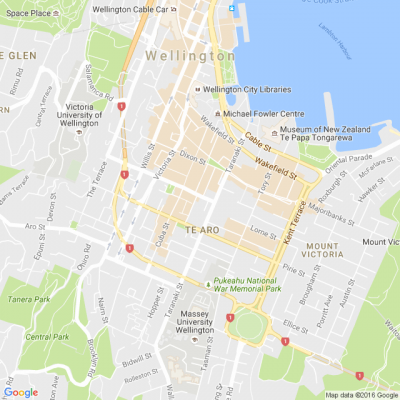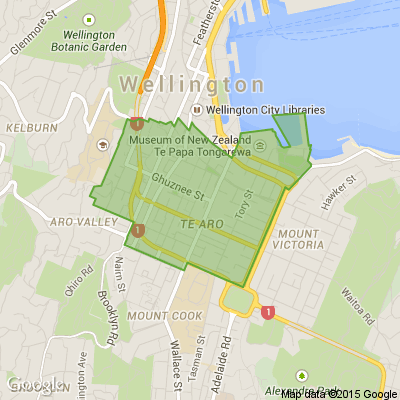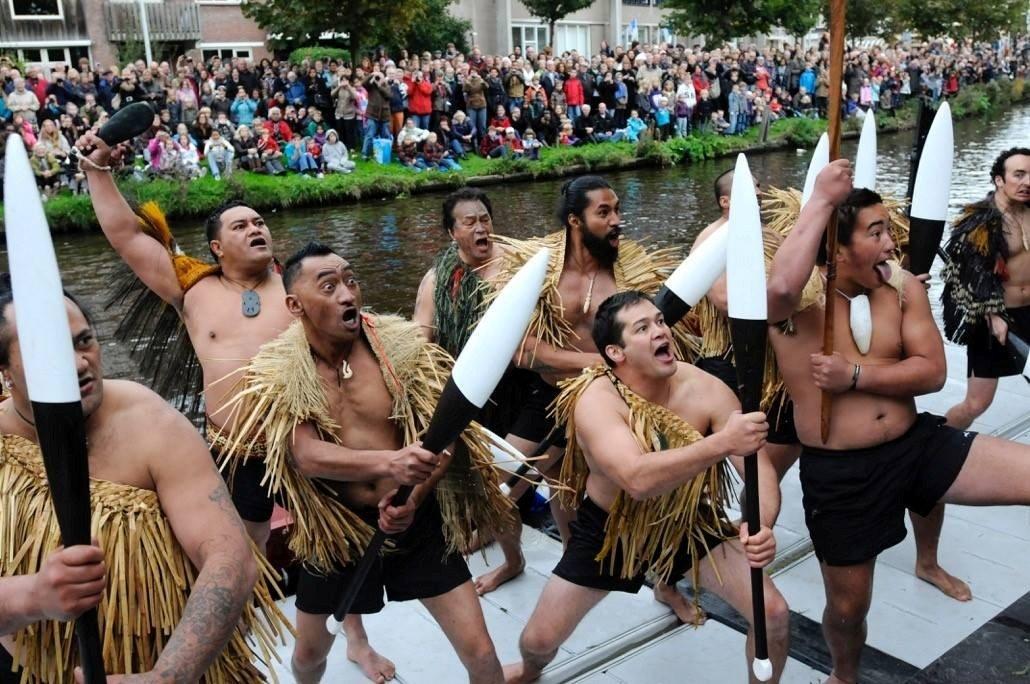
Know what’s happening
Access the private noticeboard for verified neighbours near you. Keep informed about any suspicious activity, send urgent updates to your neighbours when required and discuss emergency planning.
Get to know your neighbours
Browse the directory and start getting to know your neighbours. Don’t want to post to the whole neighbourhood? Send a private message.
Buy, sell and give away
Want to declutter your garage? Buy some used household items? Give away some garden stuff? Become a verified neighbour to browse and post items for sale. Trading is simple when everyone lives nearby.


Lost something? Found something?
Let's reunite! Share about it here.

Thank you for using Neighbourly
You may receive an email confirmation for any offer you selected. The associated companies will contact you directly to activate your requests.
Nicholas Boyack Reporter from Community News
A regional strategy designed to boost Māori prosperity has been launched by the regional council..
The strategy focuses on five primary areas, each supported by an integrated range of actions to deliver economic, cultural, environmental, social and leadership outcomes for Māori over the next 10 … View moreA regional strategy designed to boost Māori prosperity has been launched by the regional council..
The strategy focuses on five primary areas, each supported by an integrated range of actions to deliver economic, cultural, environmental, social and leadership outcomes for Māori over the next 10 years.
Coordination of the project was led by Te Puritanga Jefferies, Senior Māori Economic Development Advisor within Te Pane Matua Taio (Greater Wellington), and supported by contractors from Orauariki, Wellington School of Business and Government.
The strategy is a first for Wellington and a key objective is to increase the number of Māori in Wellington’s professional workforce.
The strategy is called Te Matarau a Māui: Collaborative Pathways to Prosperous Māori Futures..

Nicholas Boyack Reporter from Community News
Earlier this month the Upper Hutt City Counci voted to extend its existing ban on smoking in public.
The ban covers all parks, reserves and sports grounds, as well as bus stations and bus stops.
Mayor Wayne Guppy said the Council wanted the city’s public spaces to be healthy environments for … View moreEarlier this month the Upper Hutt City Counci voted to extend its existing ban on smoking in public.
The ban covers all parks, reserves and sports grounds, as well as bus stations and bus stops.
Mayor Wayne Guppy said the Council wanted the city’s public spaces to be healthy environments for its children and young people to play in and enjoy.
A number of councils in the region have similar bans. Is it time to become totally smokefree and ban smoking in all public areas?

31 replies (Members only)
2020 continues to challenge all of us, and our focus continues to remain on providing world class maths and English tuition. We would like to thank all of our families for working closely with us, enabling us to help your children reach their full potential.

Nicholas Boyack Reporter from Community News
A cake store may not seem like the obvious candidate to offer handmade face masks, but a collaboration between a Wellington crafter and a Petone cake store has taken off.
Jhan Lindsay began the project when she used some leftover materials for a mask for her partner to wear when working in the … View moreA cake store may not seem like the obvious candidate to offer handmade face masks, but a collaboration between a Wellington crafter and a Petone cake store has taken off.
Jhan Lindsay began the project when she used some leftover materials for a mask for her partner to wear when working in the close confines of a construction job. One week and more than a hundred masks later, the Wellington musician, composer and teacher is struggling to keep up with demand.
Pictures of her creations on her Facebook page quickly led to friends requesting masks for their own use. Soon after local cake shop Cake It Forward approached her to supply masks for their Jackson St store.
On the evening of the announcement that masks would be mandatory for people travelling on public transport, Lindsay received an order for another 100 of her home-sewn, reusable masks.
Cake It Forward owner Bridget Cheesman is donating proceeds from the sale of masks to Women's Refuge.
Cake It Forward started from an initiative to provide cakes for birthdays and special occasions for kids with a parent in prison.
Nicholas Boyack Reporter from Community News
A flash new mutli-use all weather playing surface, a bike pump track and an enhanced ecological corridor are all part of a upgrade planned for Newlands Park.
The overall budget is $3.6 million, with $1.54 million being allocated from the Plimmer Trust.
Other features of the park include.
* … View moreA flash new mutli-use all weather playing surface, a bike pump track and an enhanced ecological corridor are all part of a upgrade planned for Newlands Park.
The overall budget is $3.6 million, with $1.54 million being allocated from the Plimmer Trust.
Other features of the park include.
* Creating a community play space adjacent to the skate park. This will see two play spaces with one for toddlers and the other for general use.
* Space for families to gather including barbecues, sheltered seating landscaping, and area for small outdoor performances.
* A half basketball court, a bike pump track and the redevelopment of the existing skate area.
* Enhanced ecological corridor and connectivity of green networks in the Northern Suburbs.
* Improved parking facilities at the upper level sports field.
* Provide public toilet facilities located close to the play space.
Construction is planned for 2020 and will take a phased approach.

Matt Tso Reporter from Community News
A commuter has reported standing passengers were asked to disembark the 4.17pm train from Wellington to Upper Hutt on Tuesday.
On Monday Metlink confirmed staff were not responsible for enforcing physical distancing on buses - saying this would be left to passengers.
Response from Metlink … View moreA commuter has reported standing passengers were asked to disembark the 4.17pm train from Wellington to Upper Hutt on Tuesday.
On Monday Metlink confirmed staff were not responsible for enforcing physical distancing on buses - saying this would be left to passengers.
Response from Metlink general manager Scott Gallacher:
“Passengers are responsible for their own physical distancing measures. The Government have made it clear that public transport frontline workers are not expected to risk their own health and safety by enforcing physical distancing.
That said, where our frontline staff see safe and low risk opportunities for action they will use their own discretion to do so, as seen in these instances. We support our frontline staff when they make these calls. This is all about everyone looking out for each other and taking personal responsibility.
Our conditions of carriage across rail, bus and ferry state that passengers must comply with our team’s instructions at all times.”

63 replies (Members only)
Matt Tso Reporter from Community News
Righto team, where are we this week?
Let us know where you think this scene is. These days the tram tracks are gone, but it doesn't look too different.
As with last week's Way Back Wednesday, today's photograph comes courtesy of Graham Stewart and the Woolf Collection.

119 replies (Members only)
Weng from Kelburn
May we find strength in helping each other. Remember to wear a mask and keep social distancing. This too shall pass. Read and reflect. Be kind and be safe.

Nicholas Boyack Reporter from Community News
Western Suburbs midfielder Marko Stamenic has joined Danish Superliga side FC Copenhagen.
Stamenic is one of New Zealand's most exciting young players. He was set to earn a call-up to Danny Hay’s All Whites squad for the March friendlies against Bahrain and Oman, only for the games to be … View moreWestern Suburbs midfielder Marko Stamenic has joined Danish Superliga side FC Copenhagen.
Stamenic is one of New Zealand's most exciting young players. He was set to earn a call-up to Danny Hay’s All Whites squad for the March friendlies against Bahrain and Oman, only for the games to be cancelled.
The Ole Football Academy product will be playing for FC Copenhagen’s under-19 team.

Nicholas Boyack Reporter from Community News
Wellington Police are urgently seeking sightings of Izeah Hall-Taputu, who has been missing since Wednesday morning.
Hall-Taputu, 20, has been reported missing from his home in Cannons Creek, and police have significant concerns for his welfare.
If you have seen him today, or you have information… View moreWellington Police are urgently seeking sightings of Izeah Hall-Taputu, who has been missing since Wednesday morning.
Hall-Taputu, 20, has been reported missing from his home in Cannons Creek, and police have significant concerns for his welfare.
If you have seen him today, or you have information which might help find him, please call 111 immediately, quoting event number P043519039.

Caught locally in the sparkling waters that surround New Zealand, our Hoki is renowned for its succulent texture, white flesh and great taste.
We use the best ingredients to make all our Macca's® meals. Whether you’re in Whangarei or Queenstown, you’ll always get the great quality and … View moreCaught locally in the sparkling waters that surround New Zealand, our Hoki is renowned for its succulent texture, white flesh and great taste.
We use the best ingredients to make all our Macca's® meals. Whether you’re in Whangarei or Queenstown, you’ll always get the great quality and taste.
Find out more

Matt Tso Reporter from Community News
From 11.50pm on Thursday, September 3, all bus, train, ferry, ride share vehicles and taxis will display QR codes by government mandate.
Transport users are expected to use the NZ COVID Tracer app to help contain the spread of the Covid-19 virus.

64 replies (Members only)
Robert Anderson from
Natural, plant-based textile fibres come from seed hair, such as cotton; from foliage, such as sisal; from the stem, such as linen; and some fibres come from shells, such as coconut.
Among the most widely used in the textile industry, important and recognized, we can list the following fibres:
… View moreNatural, plant-based textile fibres come from seed hair, such as cotton; from foliage, such as sisal; from the stem, such as linen; and some fibres come from shells, such as coconut.
Among the most widely used in the textile industry, important and recognized, we can list the following fibres:
Abaca: Also known as Manila Hemp, abaca comes from leave sheaths around the stem of the plant of abaca, a species of banana. It is a leave fibre valued for its resistance to the damaging effects of salt water, its buoyancy and the length of the fibres, which can be more than 3 meters long. Currently, it is being increasingly used in the manufacturing of garments, household textiles and upholstery thanks to innovations in the process of this fibre. It is certainly still being used to manufacture sailing accessories, in the currency paper industry and automotive sector, and even in the food industry.
Cotton: Cotton grows in balls around the plant seeds and it is pure cellulose. Cotton is the natural textile fibre most widely used around the world and it is certainly the main protagonist in the global textile industry. There are two exceptional varieties of the highest quality: Egyptian cotton and Peruvian Pima.
It is widely used in the fashion industry, both in flat fabrics and in woven clothing items and household textile products. Cotton is used in combination with other natural and synthetic fibres, such as rayon, polyester, spandex, etc. Cotton fabrics are comfortable, very soft, have good heat conduction and absorbency; these characteristics make it perfect for garments that are in close contact with the skin, both in spring-summer and fall-winter seasons. Cotton tends to shrink; it is prone to wrinkles and fading.
Organic cotton: The biggest bet of sustainability is the use of certified organic cotton. It offers an efficient and sustainable use of natural resources avoiding synthetic or chemical pesticides and genetically modified seeds.
Coir: Coir is a short, hoarse fibre extracted from coconut husk. There are two types of coir: brown fibre, which comes from mature coconuts, and thin, white fibre, which comes from green, immature coconut husks. The white variety of coir fibre is used to manufacture rope and maritime elements because they are resistant to seawater. Brown fibre is employed to produce household textile items and even for the automotive industry. Additionally, geotextiles produced with coir mesh have special characteristics such as resistance to sunlight, great water absorption and they are 100% biodegradable.
Hemp: Hemp fibre is obtained from the stem of the plant. One of the most relevant features of this plant is that it captures large quantities of carbon. With 70% of cellulose, hemp is an excellent heat conductor, it absorbs dyes adequately, it blocks UV rays, it is very resistant to mildew and has natural antibacterial properties.
Recent developments to “cottonize” hemp fibre could open the doors of high-quality fashion market to this fibre. The longest hemp fibres can be woven and knitted to create curly fabrics, similar to linen, used in the textile industry. The mixture of hemp with cotton, linen, silk, and wool give hemp greater softness, while adding strength and durability to the product.
Hemp fibres are also used to manufacture paper and a wide variety of canvasses for different uses. It is also employed in the automotive and construction industries.
Linen: Linen is one of the strongest plant-based fibres in nature; therefore, it was one of the first to be grown, woven, and knitted to manufacture clothing and accessories. There are different types of linen based on their species. The main types are common flax and perennial flax.
Linen is a fabric with high mechanical resistance and little elasticity; therefore, it wrinkles easily. Its softness increases with washes. As linen quickly absorbs and releases water, and as it is an excellent thermal conductor, the fabric is fresh, highly valued and employed in the production of clothing for warm areas. Linen garments are fresh, comfortable, and they symbolize elegance in summer fashion.
Linen maintains a strong traditional niche among high-quality textiles for household products, beddings, upholstery, and interior design accessories.
Ramie: Ramie fibre is white with gloss similar to silk, and it is one of the strongest natural fibres, close to linen in absorption and density. It has little elasticity and it dyes easily. Ramie fibres have some transverse fissures that make it very fragile, but at the same time promote ventilation. The rugged ramie fibres are used to make ropes and nets. Through threading, they produce thin, very glossy thread that is used for a wide variety of garments.
Fabrics made 100% of ramie are lightweight, silky to the touch but with a linen appearance. Normally, as its elasticity and resistance are quite low, ramie is mixed with other textile fibres or used to improve the characteristics of other textile fibres. For example, ramie is added to wool to reduce shrinking or to cotton to increase strength.
Sisal: Sisal is an excessively hard fibre and inelastic to be used in the fashion industry. It is employed in small proportions and in combination with other fibres for the manufacture of accessories and home decor items. Currently sisal is mainly used in the furniture, automotive and naval industries, always combined with other materials.
Jute: Jute is extracted from the stem of a plant with the same name and it is very easy to grow and harvest. Jute is one of the cheapest fibres to produce. This fibre is also known as “golden fibre” because of its glow. Jute is one of the strongest, plant-based natural fibres, and it is second to cotton in terms of production volume. Jute presents poor absorption, so it deteriorates quickly when exposed to humidity; it has low thermal conduction, but it contains significant insulating and anti-static properties. Jute is used as supplementary material in textile and footwear manufacturing, as well as in household textiles.
Kapoc: It is a white fibre similar to hair that comes from the seeds of a tree called Ceiba Pentandra. Kapok is also known as “silk cotton” because of its gloss that resembles silk. Kapok’s fibre, weak and short, is resistant to moisture and it has a soft, lustrous texture. The largest volume of its production is used for household textiles.
Ramina: Ramina is a ligneous fibre also known as China grass. It is rigid, shiny, and lustrous. Ramina is used for household textiles.
Kylie Klein Nixon Reporter from Homed
Hi everyone! I'm Kylie, a Homed reporter. We're looking for people who have fairly recent, interesting, unique or off-the-wall stories to tell about how they bought their first homes. Did you move away from your home just to find a more affordable property? Did you scrimp and save for … View moreHi everyone! I'm Kylie, a Homed reporter. We're looking for people who have fairly recent, interesting, unique or off-the-wall stories to tell about how they bought their first homes. Did you move away from your home just to find a more affordable property? Did you scrimp and save for years to get a deposit together? Perhaps your family chipped in to help get you on the ladder? Are you older and buying for the first time? Did you choose to move into a home with a friend or another couple to make it more affordable? Please let us know in the comments below, or drop me a line in the messages. Your comments my be used in a story, but we'd also be interested in chatting to you for an exciting project coming up!

32 replies (Members only)
 Loading…
Loading…
Are you sure? Deleting this message permanently removes it from the Neighbourly website.
 Loading…
Loading…

 Price Upon Application
Price Upon Application


 Marketed by Christy Kimble
Marketed by Christy Kimble

 Enquiries over $600,000
Enquiries over $600,000


 Marketed by Angela Liu
Marketed by Angela Liu

 Auction
Auction



 Marketed by Ben Atwill
Marketed by Ben Atwill

 Enquiries over $895,000
Enquiries over $895,000


 Marketed by Ben Ryan
Marketed by Ben Ryan

 Price Upon Application
Price Upon Application



 Marketed by Andrew Brodie
Marketed by Andrew Brodie

 Tender
Tender



 Marketed by Charles Morley-Hall
Marketed by Charles Morley-Hall

 Deadline Sale
Deadline Sale


 Marketed by Steve Rodwell
Marketed by Steve Rodwell

 Enquiries over $595,000
Enquiries over $595,000


 Marketed by Ben Ryan
Marketed by Ben Ryan
© Neighbourly 2024
